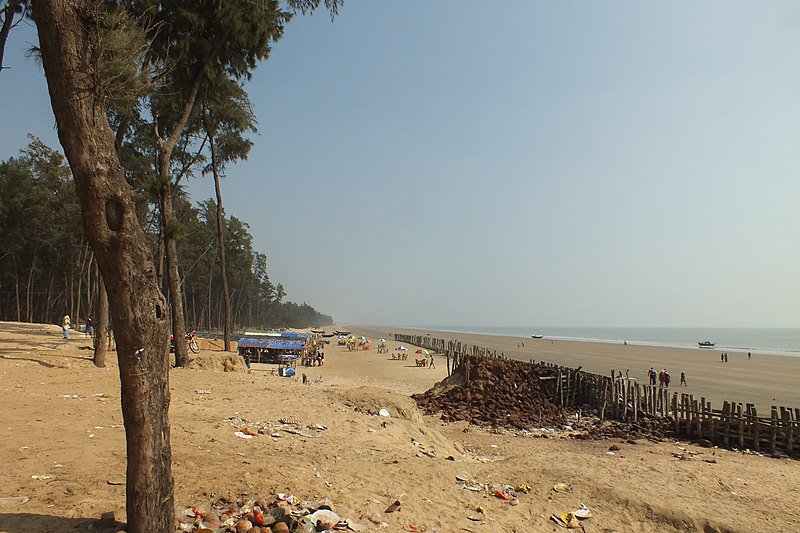

By DEBRA ACZEL and MIRIAM ACZEL
Our plastics problem is BIG and growing
A landmark study that measured global production, use and ultimate disposition of plastics found that we’ve produced 8.3 billion metric tons of plastic. That’s enough plastic to cover the entire country of Argentina. It’s the weight of 822,000 Eiffel Towers, or 1 billion elephants. Of the 8.3 billion tons, 6.3 billion becomes waste, with only 9% recycled, and 17% burned and a staggering 79% sent to landfills.
Roland Geyer of University of California Santa Barbara and his co-researchers conducted the first comprehensive global analysis of plastics’ lifecycle: how and where it is produced, its use and eventual fate. The study, according to Geyer, provides important data to help policymakers improve end-of-life management for plastics. “Roughly half of all the steel we make goes into construction, so it will have decades of use; plastic is the opposite. Half of all plastics become waste after four or fewer years of use.” If current trends aren’t reversed, he estimates that 12 billion metric tons of plastic waste produce will be in landfills or the environment by 2050—that’s the equivalent to 36,000 Empire State Buildings. As plastics are not biodegradable, waste remains in the environment for hundreds or thousands of years. The study’s authors don’t advocate elimination of all plastics, but rather an analysis on how they used appropriately, for example in some medical devices, and how to manage them.
China shifts the problem downstream
Developed countries—including the US—have shipped huge quantities of waste plastics to China for re-use in their plastics industries. In fact, China formerly imported 45% of all plastics destined for recycling. In January 2018, however, a new law came into effect banning the importation of plastic waste to China. So what happens to this waste product? Some countries in Southeast Asia, including Malaysia, Thailand and Vietnam are now accepting waste plastics but they don’t have a sophisticated a waste management program, or capacity. “Instead of taking responsibility for their own waste, US companies are exploiting developing countries that lack the regulation to protect themselves,” said John Hocevar, Oceans campaign director for Greenpeace USA.
Plastics in developing countries
The worst sources of plasticpollution in our oceans does not come from Europe or America, but rather the developing world. The reason most plastic waste is from developing countries, rather than developed countries with high rates of consumption such as the United States and others, is that developing countries don’t yet have adequate infrastructure for dealing with waste. However, as countries becoming more developed and experience increased economic growth, they are better able to manage waste and pollution, a phenomenon referred to as the ‘environmental Kuznets curve.’ Therefore, it is crucial that we focus on finding mechanisms to assist developing countries grow sustainably, and with mechanisms for recycling and reducing waste through ‘closing the loop’.
Cambodia—buried under plastic
Roughly 90 percent of the world’s plastic waste ends up in the oceans, and nearly all of it is transported from 10 major rivers, one of which is the Mekong. In Cambodia, around 10 million plastic bags are used in Phnom Penh every single day. Cambodians living in urban areas each use an estimated 2,000 plastic bags every year—over ten times the number of plastic bags used annually by consumers living in China or the European Union. Moreover, the solid waste disposal in municipal landfills has risen dramaticallyfrom 318,000 tons annually in 2004 to over 1.5 million tons annually by 2017.
Public Health Impacts
Cambodia’s largest city, Phnom Penh, is facing a severe pollution problem due to ubiquitous use of plastic packaging coupled with inadequate management of waste. Phnom Penh produces over 2,300 tons of waste each day, which collects on the streets due to the lack of recycling and waste management infrastructure. Because plastics do not biodegrade easily, they remain in the environment for centuries, leaking dangerous chemicals into the environment. The impacts on the population are twofold: citizens’ health suffers due to waste collecting on the streets and clogging drainage systems; and has even resulted in a drop in tourism.
Growing Mountains of Plastic
The problem of plastic waste is also an issue in Cambodia’s coastal areas. A recent Guardian article showed photographs of Sihanouk in southwestern Cambodia, where locals were living with shocking “mountains and mountains of plastic.” Moreover, in marine areas, both birds and fish suffer from consuming plastic or from becoming entangled in plastic materials such as fishing nets and plastic bags. Over 90% of all marine birds and fish have plastic particles in their stomach, which leads to accumulation of toxic chemicals that then pass through the food chain. As fish comprises over 60% of the protein intake for rural Cambodians, bioaccumulation of plastic from waste presents a massive environmental problem and a public health risk crisis.
So what are the solutions?
Cambodia has recently introduced a plastic bag tax, and environmental groups are actively looking for other solutions. As another solution, the United Nation Development Program (UNDP) in Cambodia has introduced a project in order to “mainstream the concept of a ‘circular economy,’” in order to both reduce the amount of waste generated, and to promote sustainable solutions for dealing with wasted in Cambodia.
The UNDP’s project is working to develop a circular economy in Cambodia, with a focus on waste Reduction, Reuse, and Recycling, in an effort to ‘close the loop’ and reduce problems of plastic pollution and generation. Using the circular economy model–which draws from the natural world where nutrients and materials are constantly cycled through the earth’s systems and reused–waste is treated as “valuable materials that should be reused or recycled, not only to reduce the volume of waste but also to generate new economic opportunities.”
In working towards this circular, rather than linear, model, the UNDP’s project focus on the three main sets of interventions:
- “Testing and implementing circular economy business models with municipalities and industries to identify viable business models for a circular economy;
- Awareness raising & environmental education: it is also critical to raise awareness about the plastic problem through environmental education and information campaigns directed at people, especially youth, and the private sector; and
- Creation of an enabling policy framework for circular economy: creation of a circular economy requires polices that actively encourage a 3R approach to plastic waste.”
Circular Economy: Environmental and Economic Benefits
According to UNDP Cambodia director Nick Beresford, “wide adoption of circular economy models can significantly reduce the use of natural resources and energy, as well as the volume of waste, greenhouse gas emission, and air pollution.” The advantages of developing a circular economy extend beyond environmental benefits. “Improving efficiency in material use and energy is also a way of reducing the cost of production and of increasing the competitiveness of businesses. Moreover, circular economy can also generate new economic value, in terms of turning waste into energy,” Beresford added.
Thus, becoming a circular economy is both a crucial solution to mitigating the severe environmental and health problems related to plastic waste and pollution, as well as an economic opportunity, which can help Cambodia achieve the 17 UN Sustainable Development Goals (SDGs) by 2030.
Debra Aczel has over 40 years in educational program management, including as program manager at MIT’s Terrascope Program—an interdisciplinary environmental program working to solve pressing global issues. She is co-founder and current co-director of the Amir D. Aczel Foundation for Research and Education in Science and Mathematics, supporting cultural and educational projects in Cambodia.
Miriam Aczel is a President’s PhD Scholar at the Centre for Environmental Policy, Imperial College London, focusing on international energy and environmental science and policy. Miriam is co-founder and co-director of the Amir D. Aczel Foundation for Research and Education in Science and Mathematics, a 501(C)(3) non-profit supporting education in Cambodia.
She is Director of Communications and blog editor for Leaders in Energy.



Leave a Reply